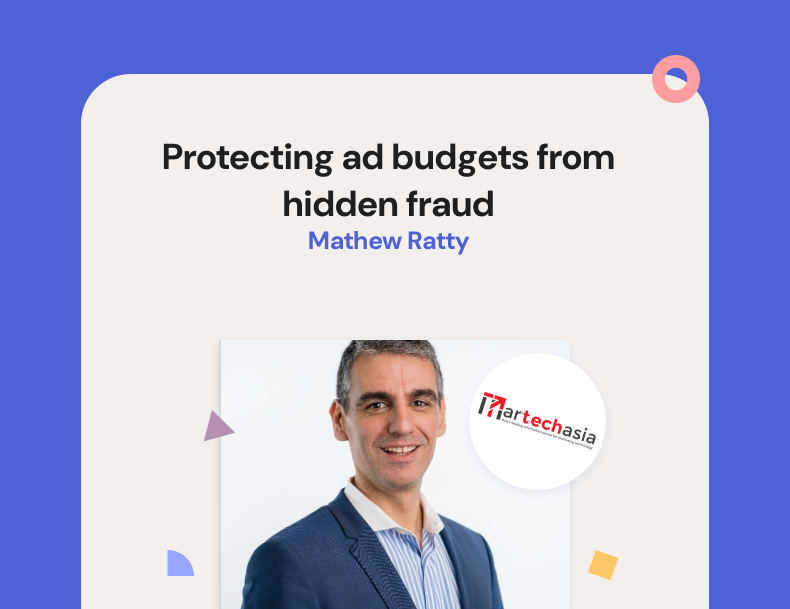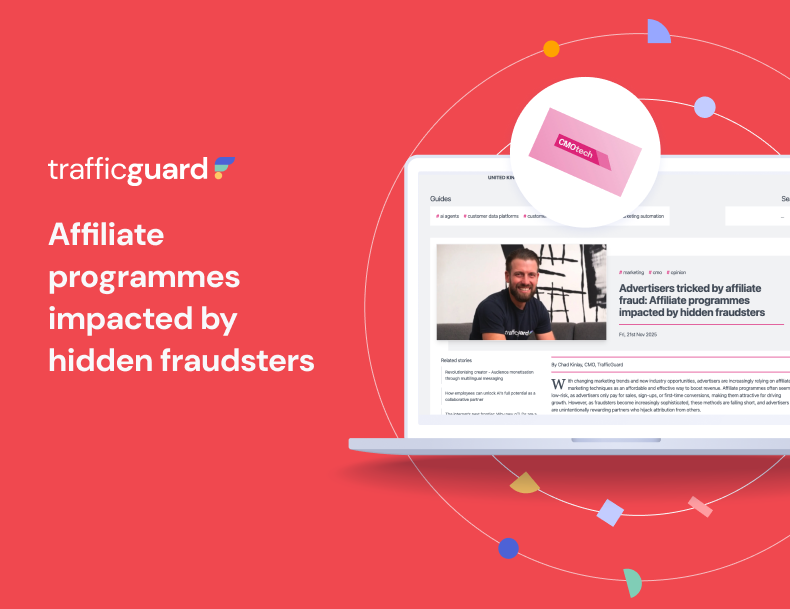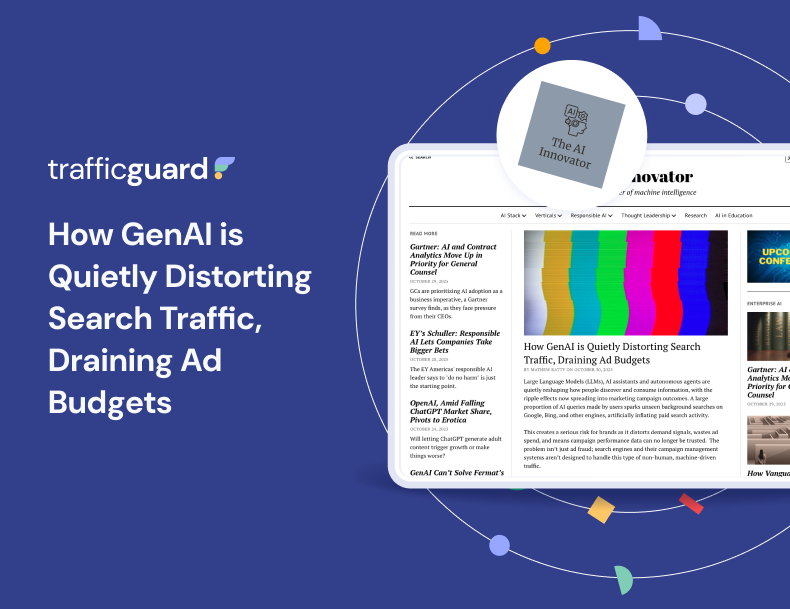TrafficGuard CEO Mathew Ratty Warns Digital Ad Fraud is Costing Billions, so what's the Solution?

With Internet ad fraud having tripled this year, costing Australian business almost US $2 billion this year, let alone the hundred billion dollars lost globally, and with more than two months of 2023 still to go, TrafficGuard CEO Mathew Ratty joins me to explain the problems and the technological solutions, so please read on and watch!
With ad fraud the second biggest global crime market after drugs, worth $US100 billion annually, it’s time for business globally to start being serious about tackling ad fraud.
The number and sophistication of attacks have tripled in 2023, but the good news is there’s an Australian company, TrafficGuard, which has quickly gained recognition as a world leader in software solutions to help organisations better measure, verify and protect where their ad dollars are going.
TrafficGuard’s CEO is Mathew Ratty, and he cites a study from UK-based analysts Juniper Research, which estimates that Australian businesses have lost $US1.97 billion to ad fraud this year, already surpassing the $US1.32 billion purloined in 2022. At current rates, this means we’re on track to see a tripling of 2022 numbers by the end of this year.
Meanwhile, over the same period, there has been a dramatic increase in cyber-attacks against Australian organisations, with telco Optus and health insurer Medibank suffering amongst the biggest breaches ever seen in the country.
Globally, ad fraud is now the second biggest crime business behind drugs, expected to hit $US100 billion this year according to Statista.
To learn more, to understand how ad fraud is being perpetrated, how TrafficGuard can protect your ad spend, how AI is used, how transparency is assured, and to learn about the rising threat of ad fraud in Google’s Performance Max, please watch the video interview with Mathew Ratty, Co-Founder and CEO of TrafficGuard below!
Describing the problem of ad fraud, Ratty said: “Ad fraud has quickly become one of the most lucrative businesses for criminal organisations, made more appealing by the fact it’s relatively easy to execute while being extremely difficult to detect and prove. It’s therefore incumbent upon any organisation operating in the digital world to limit their exposure with the best tools they can source”.
Australia’s Interactive Advertising Bureau (IAB) recently published its Digital Ad Fraud Handbook. Authored by industry experts, including TrafficGuard’s Ratty, it provides a comprehensive analysis of current ad fraud – or invalid traffic (IVT) types – and the best tools and techniques organisations should embrace to mitigate against them.
Google PPC, mobile app user acquisition campaigns, and affiliate scams are among the more common vehicles for ad fraud detected in 2023, with new pathways and techniques being developed all the time. Meanwhile, more and more sophisticated fraud is being detected on social media platforms.
Aside from the losses to fraud itself, businesses risk incurring major opportunity costs if their advertising budgets are being exhausted by criminals.
“TrafficGuard drives unrivalled advertising performance by verifying engagement in real-time, actively blocking IVT from marketing campaigns, ensuring that ad spend reaches more real users while protecting the integrity of data that brands, marketers, agencies, and publishers rely on to drive better performance,” Ratty added.
“We now offer a comprehensive suite of products for full-funnel protection, making us the first company to truly offer an omnichannel digital marketing anti-fraud solution,” Ratty added.
On the topic of Google’s Performance Max (PMax) technology in 2022, it seemed like the answer to every marketer’s dream – but it’s important to note that it’s not just invalid traffic that’s costing brands — AI also has the potential to optimise suboptimal outcomes.
TrafficGuard states: “Using machine learning, PMax sought to help businesses drive marketing efficiency, performance and better ROI by automating campaign optimisation across all of Google’s channels, including YouTube, Search, Shopping and Discovery.
“The problem with all black box systems is marketers are at the mercy of the algorithm. In the case of PMax, where Google manages everything, it requires an even higher level of faith in the system. Adding to this, limited granular reporting in PMax means that while you get broad campaign insights, you won’t be able to see if it’s display, search, video, or shopping ads driving your clicks and conversions.”
Ratty explains how PMax issues are solved using TrafficGuard’s technologies, and while you can absolutely read more here from TrafficGuard’s Chief Marketing Officer, Chad Kinlay, CEO Mathew Ratty also discusses it in more detail in the video interview above.
Here’s a summary of the topics we spoke about:
- I started by introducing Mathew, and asked him to explain why he started the company, what TrafficGuard does to detect and prevent ad fraud, and what else it solves for customers.
- Next, we looked at the state of ad fraud today in Australia compared with 5 years ago, after which we investigated how Australia compares with the rest of the world.
- Mathew explained the main types of ad fraud, why Google doesn’t have ad fraud prevention services anywhere near as robust as TrafficGuard, and what the competitive anti-fraud landscape looks like.
- We then looked at how the company might evolved over the next couple of years, followed by my usual questions on the first computer Mathew remembers using as a child, great advice he has received in life to help him get where he is today, and his final message, not only to the viewers and readers, but also to his current and future customers and partners.
You can also learn about a typical working day for Mathew in an article form Business Leader here.
Read more 👉 here.
Get started - it's free
You can set up a TrafficGuard account in minutes, so we’ll be protecting your campaigns before you can say ‘sky-high ROI’.
He is the Co Founder and current Chief Executive Officer of Adveritas and TrafficGuard since 2018. Prior to this Mr Ratty Co-founded MC Management Group Pty Ltd, a venture capital firm operating in domestic and international debt and equity markets, who are also substantial shareholders in the Company. At MC Management, Mr Ratty held the role of Head of Investment and was responsible for asset allocation.
Subscribe
Subscribe now to get all the latest news and insights on digital advertising, machine learning and ad fraud.







